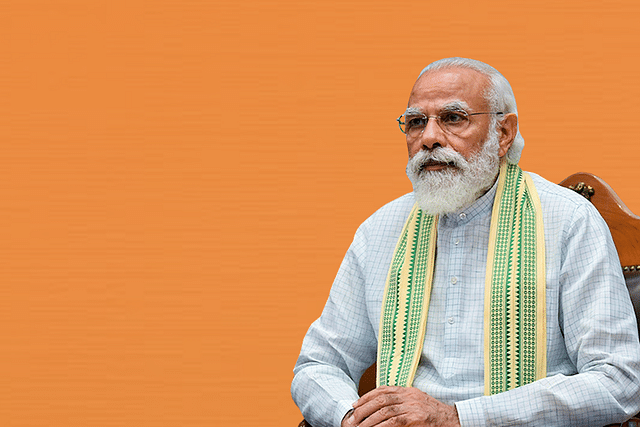
World Water Day: Prime Minister Modi To Launch Jal Shakti Abhiyan To Conserve Water
‘Jal Shakti Abhiyan’ will be taken up in all districts, rural as well as urban areas, of the country with the main theme “catch the rain, where it falls, when it falls”.
Prime Minister Narendra Modi will launch the ‘Jal Shakti Abhiyan (JSA): Catch the Rain (CTR)’ campaign today (22 March) on the occasion of World Water Day.
The Prime Minister will also address central and state government officers of departments/ministries concerned, district magistrates/district collectors/deputy commissioners of districts and sarpanchs of all gram panchayats through video conferencing/virtual platform.
“Jal Shakti Abhiyan: Catch the Rain” will be taken up in all districts, rural as well as urban areas, of the country with the main theme “Catch the Rain, where it falls, when it falls”.
The campaign will be implemented during 22 March 2021 to 30 November 2021 — the pre-monsoon and monsoon period in the country. The campaign is being launched as a jan andolan to take water conservation at grassroots level through people’s participation to accelerate water conservation across the country.
The campaign is intended to nudge the state and all stakeholders to create rain water harvesting structures (RWHS) suitable to the climatic conditions and sub-soil strata to ensure storage of rainwater, as rains falling in the four/five months of monsoon are the only source of water for most parts of the country.
Gram sabhas will be held in all gram panchayats of each district (except in the poll bound states) to discuss issues related to water conservation after the address by the Prime Minister. These gram sabhas will also take "jal shapath" or oath for water conservation.
In the presence of Prime Minister Modi, the Union Minister of Jal Shakti and the chief ministers of Madhya Pradesh and Uttar Pradesh will sign a historic agreement on 22 March 2021 to implement the Ken Betwa Link Project (KBLP), the first project of the national perspective plan for interlinking of rivers, through video conferencing/virtual platform.
This agreement will herald the beginning of inter-state cooperation to implement the vision of Atal Bihari Vajpayee to carry water from areas that have surplus water to drought prone and water deficit areas through the interlinking of rivers.
The rainfall pattern in India is highly skewed with most of the rainfall happening in about 100 days in a year. Also, due to geographical variations, India has some of the driest and wettest places in the world.
Keeping this in view, the national perspective plan was prepared by the then Ministry of Irrigation to transfer water from water surplus basins to water-deficit basins.
KBLP involves transfer of water from the Ken to the Betwa river through the construction of Daudhan Dam and a canal linking the two rivers, the Lower Orr Project, Kotha Barrage and Bina Complex Multipurpose Project. The project will provide an annual irrigation of 10.62 lakh hectare, drinking water supply to about 62 lakhs people and also generate 103 MW of hydropower.
The project will be of immense benefit to the water starved region of Bundelkhand, spread across Madhya Pradesh and Uttar Pradesh, specifically to the districts of Panna, Tikamgarh, Chhatarpur, Sagar, Damoh, Datia, Vidisha, Shivpuri and Raisen of Madhya Pradesh and Banda, Mahoba, Jhansi and Lalitpur of Uttar Pradesh.
This agreement will come after long, consistent efforts on consensus building between the states of Madhya Pradesh and Uttar Pradesh, facilitated by government of India, and will pave the way for more interlinking of river projects to ensure that scarcity of water does not become an inhibitor for development in the country.